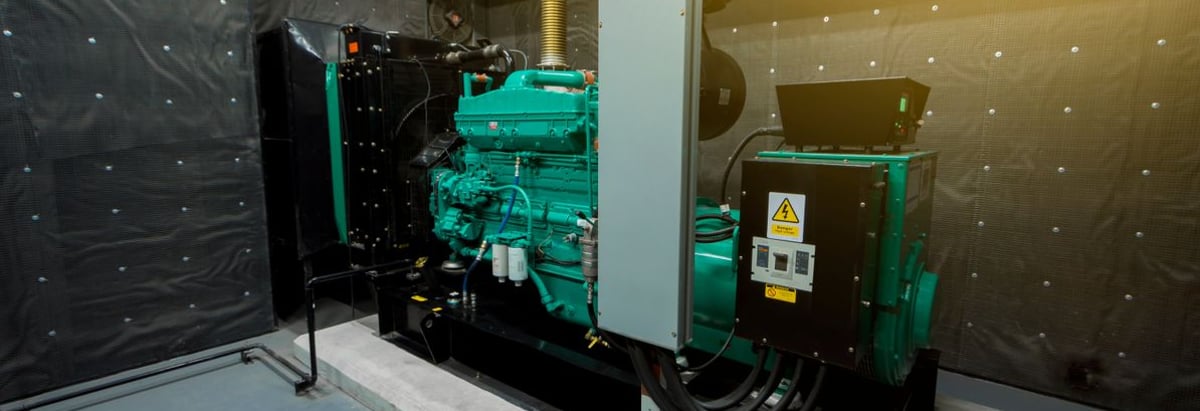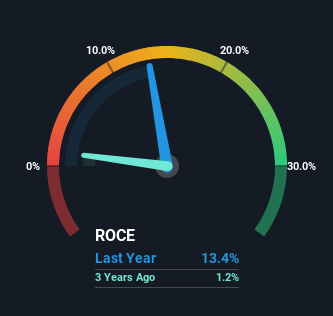- South Korea
- /
- Electrical
- /
- KOSE:A298040
Returns At Hyosung Heavy Industries (KRX:298040) Are On The Way Up

What trends should we look for it we want to identify stocks that can multiply in value over the long term? Ideally, a business will show two trends; firstly a growing return on capital employed (ROCE) and secondly, an increasing amount of capital employed. This shows us that it's a compounding machine, able to continually reinvest its earnings back into the business and generate higher returns. So on that note, Hyosung Heavy Industries (KRX:298040) looks quite promising in regards to its trends of return on capital.
What Is Return On Capital Employed (ROCE)?
Just to clarify if you're unsure, ROCE is a metric for evaluating how much pre-tax income (in percentage terms) a company earns on the capital invested in its business. The formula for this calculation on Hyosung Heavy Industries is:
Return on Capital Employed = Earnings Before Interest and Tax (EBIT) ÷ (Total Assets - Current Liabilities)
0.13 = ₩260b ÷ (₩4.8t - ₩2.8t) (Based on the trailing twelve months to December 2023).
Thus, Hyosung Heavy Industries has an ROCE of 13%. On its own, that's a standard return, however it's much better than the 8.3% generated by the Electrical industry.
See our latest analysis for Hyosung Heavy Industries

Above you can see how the current ROCE for Hyosung Heavy Industries compares to its prior returns on capital, but there's only so much you can tell from the past. If you'd like to see what analysts are forecasting going forward, you should check out our free analyst report for Hyosung Heavy Industries .
How Are Returns Trending?
Investors would be pleased with what's happening at Hyosung Heavy Industries. The data shows that returns on capital have increased substantially over the last five years to 13%. Basically the business is earning more per dollar of capital invested and in addition to that, 36% more capital is being employed now too. The increasing returns on a growing amount of capital is common amongst multi-baggers and that's why we're impressed.
On a separate but related note, it's important to know that Hyosung Heavy Industries has a current liabilities to total assets ratio of 59%, which we'd consider pretty high. This can bring about some risks because the company is basically operating with a rather large reliance on its suppliers or other sorts of short-term creditors. While it's not necessarily a bad thing, it can be beneficial if this ratio is lower.
What We Can Learn From Hyosung Heavy Industries' ROCE
To sum it up, Hyosung Heavy Industries has proven it can reinvest in the business and generate higher returns on that capital employed, which is terrific. And a remarkable 626% total return over the last five years tells us that investors are expecting more good things to come in the future. With that being said, we still think the promising fundamentals mean the company deserves some further due diligence.
One more thing to note, we've identified 2 warning signs with Hyosung Heavy Industries and understanding them should be part of your investment process.
While Hyosung Heavy Industries isn't earning the highest return, check out this free list of companies that are earning high returns on equity with solid balance sheets.
Valuation is complex, but we're here to simplify it.
Discover if Hyosung Heavy Industries might be undervalued or overvalued with our detailed analysis, featuring fair value estimates, potential risks, dividends, insider trades, and its financial condition.
Access Free AnalysisHave feedback on this article? Concerned about the content? Get in touch with us directly. Alternatively, email editorial-team (at) simplywallst.com.
This article by Simply Wall St is general in nature. We provide commentary based on historical data and analyst forecasts only using an unbiased methodology and our articles are not intended to be financial advice. It does not constitute a recommendation to buy or sell any stock, and does not take account of your objectives, or your financial situation. We aim to bring you long-term focused analysis driven by fundamental data. Note that our analysis may not factor in the latest price-sensitive company announcements or qualitative material. Simply Wall St has no position in any stocks mentioned.
About KOSE:A298040
Hyosung Heavy Industries
Manufactures and sells heavy electrical equipment in South Korea and internationally.
Undervalued with high growth potential.
Similar Companies
Market Insights
Community Narratives



